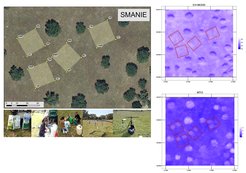MANIP - Large-Scale Manipulation Experiment
MANIP, a long term experimental project, aims at understanding responses in different eddy covariance sites from nutrient loading (primarily N and P) and water availability, on ecosystem-level carbon, water fluxes, and their interannual variability.
Context & Background
`Tree-grass´ ecosystems. Mixed tree-grass systems are widely distributed (~16-35% of global land-surface) vegetation formations such as tropical and Mediterranean savannas, the “waldsteppe” in Eurasia and culturally influenced vegetation types such as agro-forestry systems or grazed open-forests in Europe (Hanan & Hill 2011). Semi-arid tree-grass systems are considered one of the major contributors to the interannual variability of the global carbon cycle (Poulter et al., 2014). Despite their wide distribution, Earth observation systems, and associated land-surface modeling development have been so far poorly adapted to the key structural and functional characteristics of tree-grass ecosystems. As consequence a significant uncertainty and bias in the assessments of energy, carbon, water and biogeochemical dynamics is often observed (Hanan & Hill 2011; Beringer et al. 2011).
Nutrient (N, P) imbalance. Human induced CO2 and N fertilization leads to a stoichiometric imbalance, which confers an important role to P availability and leads to shifts in C-N-P ratios and balances (Peñuelas et al. 2012).
N/P imbalances are particularly important in water-limited ecosystems (Sardans et al., 2012), where the synergistic effect of water and nutrient (N and P) availability/imbalance could impact ecosystem functioning, structure, allocation patterns and the nutrient and carbon cycling, and ultimately how the ecosystem will respond to extreme drought events.
Hence it is important to study the effects of N and P imbalances under different water regimes, in particular in mixed tree-grass at ecosystem scale.
MaNiP project offers an original experimental design integrating cutting-edge approaches to study the combined effect of nutrient and water limiting factors on fundamental ecosystem, plant and soil processes.
Objectives and Questions
1. Long-term experiment in a Mediterranean tree-grass systems
2. Focus on interaction and effects of different N/P stoichiometry and water availability on ecosystem processes
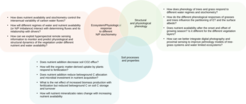
Experimental Design and Facilities
- Two clusters of eddy covariance (EC) flux towers will be located over two tree-grass ecosystems (3 EC systems per cluster)
- Two clusters located along a precipitation gradient (100-150 mm). (“WET” cluster, Majadas, Spain – “DRY” cluster under selection).
- WET cluster associated to an existing long-term EC site in order to have more information about site history, and EC flux data to establish a ‘baseline’ of magnitude and interannual variability of carbon, water, and energy fluxes.
- Sites are selected in a way to have similar similar nutrient conditions, canopy structure, and stoichiometry of the different vegetation and soil pools.
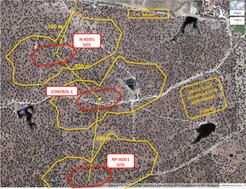
Red lines represent the footprint climatology according to Göckede et al., (2008).
The area of the Small Scale Manipulation Experiment (SMANIE)
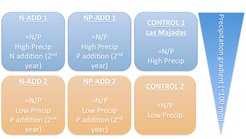
MaNiP Set-Up
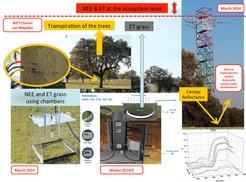
SMAINE Set-Up
